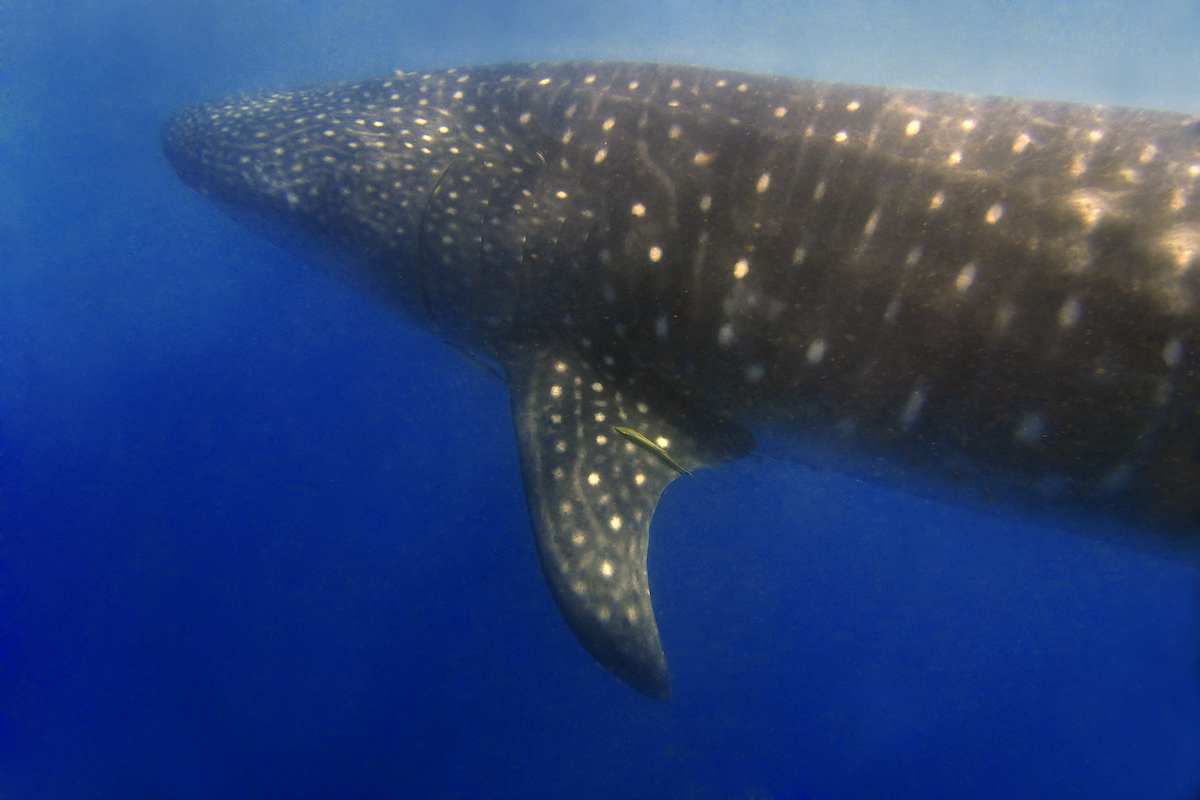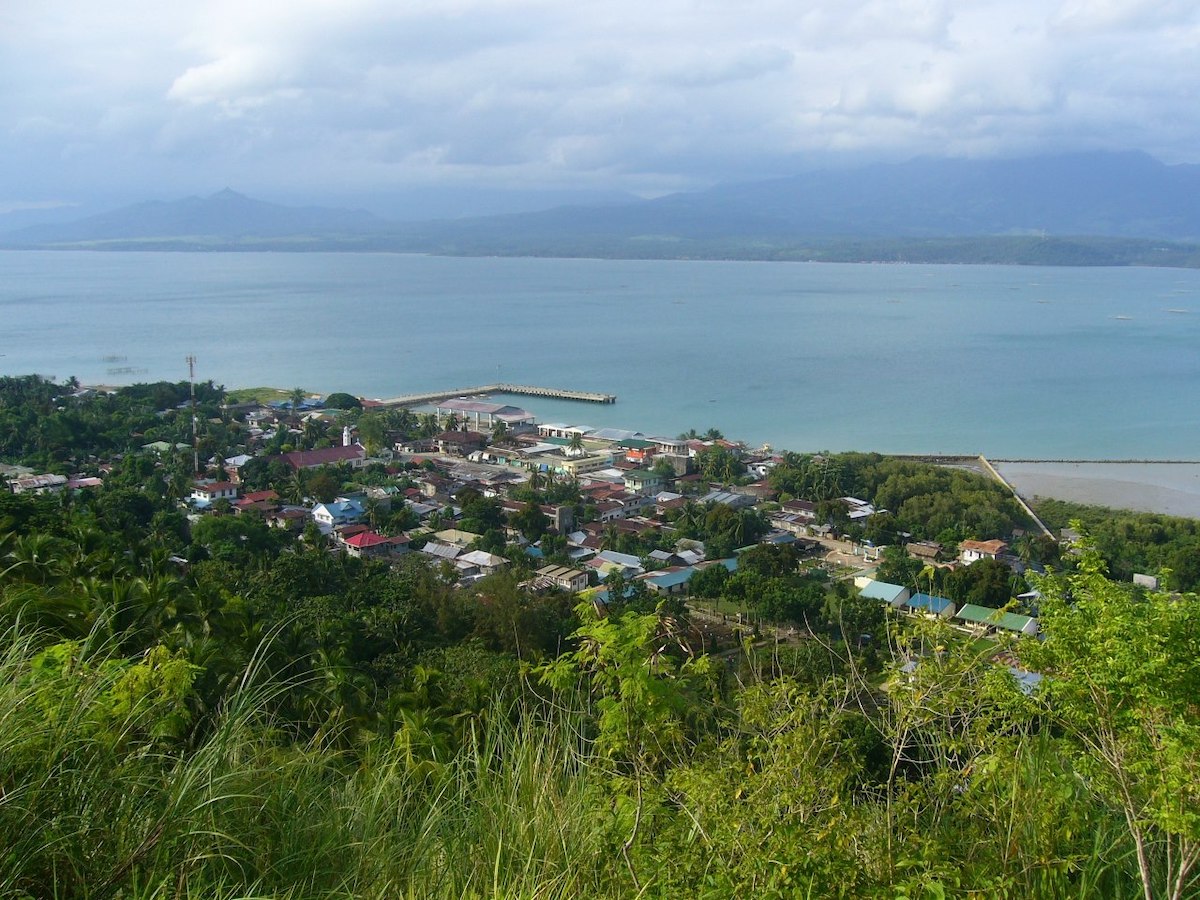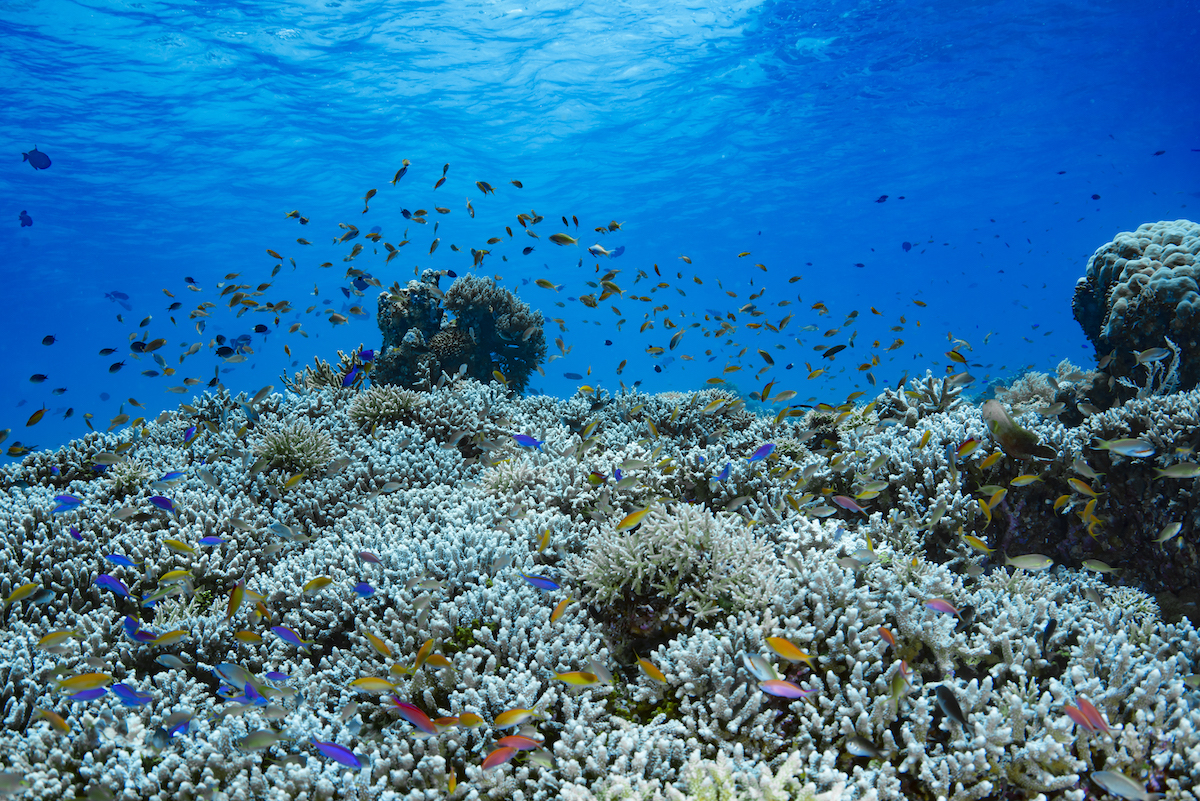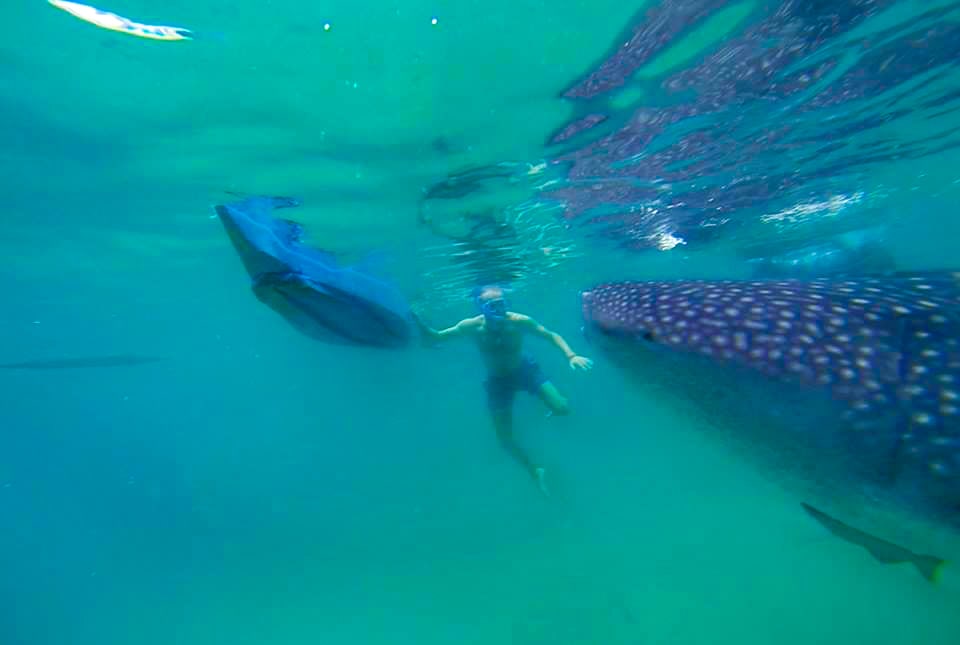Swimming with whale sharks in the Philippines is not just a big hit for overseas tourists chasing those thirsty Instagram likes, it’s also a serious dream for locals who want to swim alongside what they call a “Butanding,” rivalled only by the suicidal tarsier of Bohol as the most popular wildlife bucket list item of the Philippines.
Alas, just when the cat was out of the bag about yet another reason to say “it’s more fun in the Philippines” and we thought we could have nice things, new information started to come out that this practice is unethical and harming the gentle giants of the ocean that we wish to paddle alongside.
Some of those concerns are valid and not all places are created equal when it comes to snorkelling or scuba diving with whale sharks. The Philippines emulates Australia, Mexico and small parts of Thailand and Indonesia for this activity but seeing that it’s a huge archipelago, finding the right one can be a headache to navigate.
In this article, I’ll take a look at the four most popular spots to swim with a whale shark in the Philippines, including the often infamous Oslob and I will highlight the pros and cons of each destination.
Before we get into it, let’s have a full disclosure of the theme at hand; I did swim with whale sharks in the Philippines. I’ll elaborate on that later on in the post with complete candour, but first here’s your guide to swimming with whale sharks in the Philippines so you can make an informed decision about where to do it, or whether it is for you at all.
8 Facts About Whale Sharks
- Whale sharks are known as ‘Buttading’ in the Philippines and are so highly regarded that they’re featured on the 100 peso bill!
- As the largest fish in the ocean, whale sharks can grow up to 12 metres in length and weigh up to 22 tons.
- Despite their meter-wide mouths, whale sharks can’t bite their food but instead sieve plankton through their gills to get the nourishment they need.
- Even though whale sharks can’t bite their food, they still have around 3,000 tiny teeth. Researchers aren’t totally sure what they use these for but think they might be a vestigial structure (i.e. leftover parts from a previous ancestor)
- Only around 10% of whale sharks survive until adulthood, but they can live for between 70 and 100 years when they do.
- Wanted for their fins, liver oil, skin and meat, the global population of whale sharks has declined recently, and is now declared an endangered species.
- Despite their huge size, whale sharks move at a speed of three miles per hour, making it a little easier to keep up with them.
- Even though we know that whale sharks give birth young, scientists are still none the wiser as to how they mate, or where they give birth after decades of research!
Best Places For Swimming With Whale Sharks in The Philippines
Not all places are created equal when it comes to swimming with whale sharks in the Philippines, but the “best” places in terms of popularity and high concentrations of whale shark populations are Donsol, Leyte, Tubbatah and Oslob.
For those of you who don’t know, there is currently a dark shadow over the industry of swimming with whale sharks and Oslob in particular has come under a lot of scrutiny.
Below I break down swimming with whale sharks in Donsol, Leyte, Tubbataha and Oslob, so you can see how they weigh up against each other and highlight the Oslob situation.
Swimming With Whale Sharks in Donsol

As the centre of sustainable whale shark tourism, Donsol is said to be one of the most ethically sound places in the Philippines to swim with whale sharks. There’s no feeding, absolutely no getting within four metres of the sharks, and it’s much quieter than some of the other spots in the Philippines.
However, while this location may be great from an eco-tourism point of view, spotting a whale shark in the wild isn’t always guaranteed, and you could end your visit without a single sighting.
Know Before You Go:
- Location – Donsol is a small village that sits on the island of South Luzon.
- Cost – Around 450 pesos for registration and gear rental, and then 3500 pesos for boat rental which will seat up to six people.
- Opening hours – Whale shark season runs from November to early June, with boats running from the early morning to late afternoon.
- Time needed – Allow a full day for a tour here, as you’ll also need to find the whale sharks, not just swim with them.
- Getting there – Donsol is around a 90-minute drive from the Bicol region’s biggest city, Legazpi. To get to Legazpi in the first place, you’ll find direct flights from Manila (daily) or Cebu (three weekly). For travellers on a shoestring, buses leave from Manila to Donsol daily but take around 13 hours.
Pros:
- Part of a Whale Shark Interaction Eco-Tourism Project, which means all safety rules are adhered to.
- Much fewer tourists and fewer boats to fight out on the water.
- Interactions can take no longer than ten minutes so as not to interrupt the whale sharks.
- No feeding allowed – this is a natural sighting.
Cons:
- Sighting is not guaranteed.
- In bad weather conditions, boats are often cancelled.
- Rumours of overcrowding during peak season.
Swimming With Whale Sharks in Leyte

Similar to Consol, Leyte is one of the better locations to go swimming with whale sharks in the Philippines. This isn’t just because it’s a much more ethical experience, but it’s an authentic one too. Sightings of whale sharks aren’t guaranteed, but Leyte has a better track record than Donsol for sightings, especially from December to May.
Yet to enjoy the same popularity as Oslob, Leyte’s secret is almost out, but still relatively uncrowded at the moment.
Know Before You Go:
- Location – Swimming with whale sharks in Leyte takes place in Sogod Bay on the island of Leyte, which is just east of Cebu and Bohol.
- Cost – One of the more expensive places to go swimming with whale sharks in the Philippines, a trip will cost around 3000 pesos per person.
- Opening hours – Whale shark season stretches from December until May, with tours running most days.
- Time needed – A full day. As is the case with natural sightings, you’ll need to put aside time actually to find the sharks, not just swim with them.
- Getting there – To get to Sogod Bay, first, you’ll need to make it to Leyte. You’ll find regular flights from Manila and Cebu. From here you’ll need to jump on a bus which takes three to four hours. Alternatively, you can get a boat from Pier 1 in Cebu to Massin, which takes around three hours on the fast ferry or six on the regular ferry.
Pros:
- Very few visitors and much fewer boats out on the water.
- Practices include no diving, a strict no-touching rule and no feeding.
- Wild sightings rather than forced feeding.
- Very small group sizes – no more than six in each boat.
Cons:
- One of the most expensive places to swim with whale sharks in the Philippines.
- Sightings of whale sharks aren’t guaranteed.
Swimming With Whale Sharks in Tubbataha

Hidden away in the Sulu Sea, 150 kilometres from the coast of Palawan, Tubbataha is possibly the most exclusive destination to swim with whale sharks in the Philippines. Listed as a protected UNESCO World Heritage Site, Tubbataha stretches across 100,000 hectares of pristine reef systems, is home to 600 species of fish and, even better, remains largely untouched.
Adding to its exclusivity is that Tubbataha can only be explored during its short diving season that runs from March to June, a season that rewards divers with up to a staggering 45 metres of visibility. Saying that, this is not a spot for novice divers, you’ll need a minimum of 100 dives to consider tackling this underwater paradise.
Know Before You Go:
- Location – Tubbataha can be found in the Sulu Sea, more than 150km off the south coast of Palawan.
- Cost – A diving spot as exclusive and magical as this doesn’t come cheaply. Prices include environmental fees for the national park, equipment hire, accommodation, food, and travel from Puerto Princesa. Expect to pay between 65,000 and 70,000 pesos.
- Opening hours – N/A
- Time needed – Most trips to Tubbataha last at least five days, not including the day it takes to get there and back. Allow at least a week for your trip – you won’t regret it.
- Getting there – The only way to reach Tubbataha is on a liveaboard from Puerto Princesa, which tends to sell out around a year in advance. Popular companies include Seadoors, Solitude One, Infiniti Tubbataha and Discovery Adventure. Puerta Princessa is relatively simple to get to, with regular flights from all major domestic hubs.
Pros:
- The most exclusive spot for diving with whale sharks in the Philippines.
- Very very few people visit Tubbataha.
- A huge diversity of wildlife sightings, including turtles, manta rays and tuna.
- You’ll get ten to fifteen chances to dive during your seven-day trip.
Cons:
- Very remote and difficult to get to
- A short diving season that runs for just three months a year.
- Only available for qualified divers with at least 100 dives on their belts.
- Tours sell out extremely quickly, so a lot of pre-planning is needed.
- Not guaranteed sighting of a whale shark.
- Much more expensive than other whale shark swimming spots.
Swimming With Whale Sharks in Oslob: The Elephant in The Room

The tiny fishing city of Cebu in Oslob is one of the most popular places to go swimming with whale sharks in the Philippines and has come up against a lot of criticism in the last few years. It’s a popular choice for international and local tourists, as you’re pretty much guaranteed to see at least one whale, and it’s also a lot cheaper.
First fed by local fishermen, the whale sharks have started to associate the boats with food, arriving every morning as early as 6 am for a big feed. Whether you agree with this, or not is another question.
Know Before You Go:
- Location – Oslob sits on the southeastern coast of the island of Cebu.
- Cost – Swimming with whale sharks in Oslob costs a bargain total of 1,000 pesos and includes a 30-minute boat ride with all of your snorkelling gear.
- Opening hours – Boats run from as early as 6 am until 1 pm.
- Time needed – Allow around an hour for the whole experience.
- Getting there – Oslob is around a four-hour bus journey from Cebu City’s South Bus Terminal. There are a number of busses that stop off in Oslob, but you’ll need one with the end journey of Bato.
Pros:
- Guaranteed sighting of a whale shark
- No need to reserve your visit in advance
- Very affordable prices
- Can view the whale sharks from the boat
- Limited to six guests per whale shark
- Briefing about the safety and well-being of whale sharks
Cons:
- Very busy – you’ll need to go as early as possible to avoid the crowds
- Whale sharks are fed here, so not necessarily a ‘wild’ sighting
- Only 30-minutes to swim with the sharks
- A small area which makes keeping a safe distance from the whale sharks quite difficult
Conclusion
As I mentioned earlier in the post, don’t be too surprised if your plans to swim with whale sharks anywhere in the world are met with disdain or suspicion from another party. The industry has come under a dark cloud over the years, however from my understanding, it’s not black and white and opposing voices from both sides have weighed in with their disagreements.
The main argument against this is that feeding the whale sharks messes with their migratory pattern, the pro argument is “better fed than dead,” a play on words that celebrates the endangered species now being off-limits to kill for their oil and meat.
A lesser of two evils concept vs interference with nature for human hedonism.
It’s of course a lot more complex than these two claims and seeing that the main bone of contention is regarding Oslob, I have gone into it in great detail in my swimming with whale sharks in Cebu article.
Feel free to check that one out, I hope this post helped you get your head around swimming with whale sharks in the Philippines and that you’re in a better position to make the best decision.







